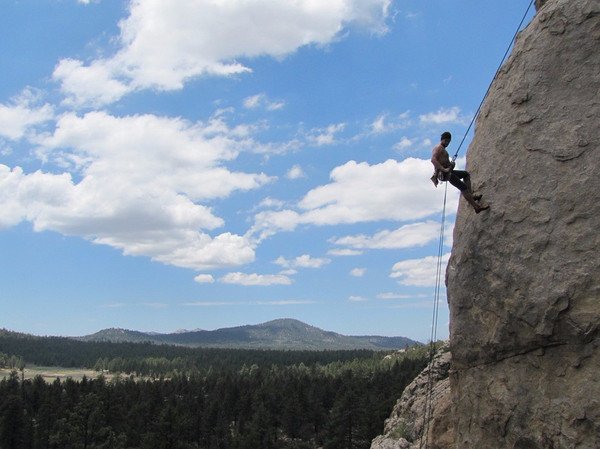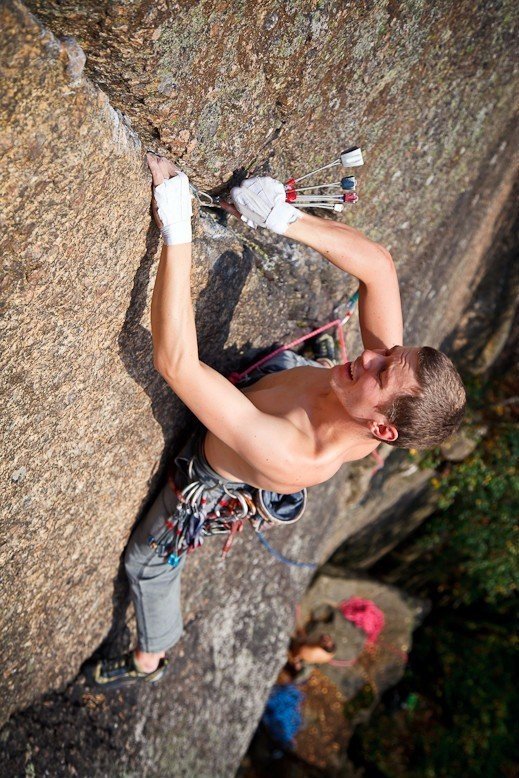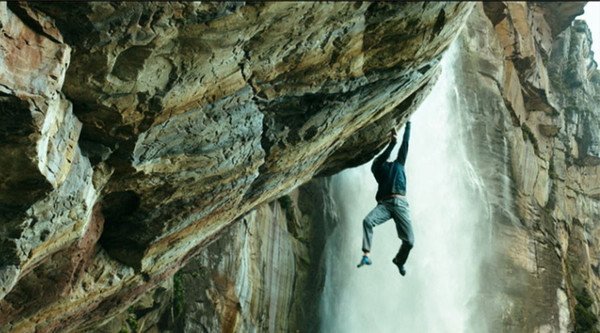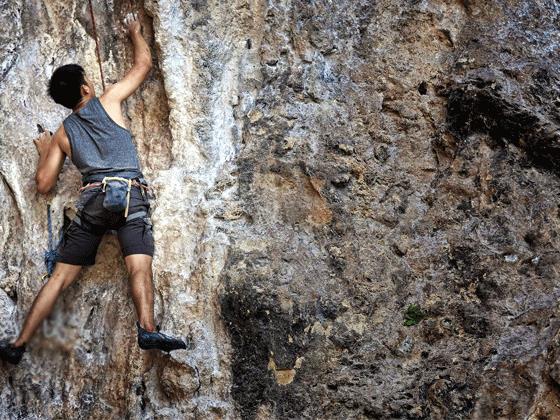Beginner's Guide to Rock Climbing and Equipment Introduction

Rock climbing is a sport that began to rise after 1970, and it can be said that it is becoming more and more popular at home and abroad!
Rock climbing can exercise the strength of the upper body. After overcoming the fear of heights, it can improve self-confidence and release pressure. It is a leisure treatment method that many people with disabilities choose! However, compared with jogging, cycling, ball sports, and rock climbing, there are more equipment and precautions that need to be prepared, which is the reason why everyone is discouraged from this sport.
But with proper preparation, rock climbing is a very safe, family-friendly leisure activity.
Step 1: Know the Types of Climbing
In terms of rock climbing locations, rock climbing can be roughly divided into:
Bouldering: The biggest difference between bouldering and rock climbing is that bouldering usually has a climbing height of 3-5 meters, so there will be no ropes to help you climb. Indoor bouldering is great for beginners who are afraid of heights, although some would suggest that it is better for beginners to start with indoor climbing. There should be bouldering rooms in universities or sports centers, and indoor bouldering requires less equipment, just a pair of climbing shoes can go into battle! Outdoor bouldering is more difficult, and remember to bring a drop pad.

Indoor rock climbing: Indoor rock climbing is really just: bouldering with height and rope support.
Climbing requires a lot of equipment, in addition to climbing shoes: Safety harnesses and shackles Ropes are provided by instructors or climbing sites, and other equipment is usually rentable.
Secure climbing above the outdoors: it's actually what we call outdoor climbing
The coach will set up a fixed point at the top, and you can freely choose the climbing path. The variable factors of outdoor climbing, such as the type of rock and the direction of the wind, will affect the climbing. After beginners have basic rock climbing knowledge, it is more suitable to do outdoor climbing! And you must wear a helmet throughout the climb to prevent falling rocks.
Step 2: Prepare the Gear
Indoor climbing gear
1. Climbing gyms usually provide artificial rock walls, professional climbing ropes, and belts (which can bear 2 tons of weight);
2. A pair of well-fitting, sturdy climbing shoes;
3. Professionals explain rock climbing methods and techniques;
4. Complete security measures;
5. Facilities such as fitness equipment, changing rooms and bathrooms.
Outdoor climbing gear
Personal equipment includes seat belts, climbing shoes, safety helmets, magnesium powder bags and suitable clothing; protective equipment includes climbing ropes, belay locks, ascenders, descenders, quick hooks, lanyards, rock cones, rock plugs, mechanical plugs and many more.
Basic rock climbing equipment
Main rope: The main rope can be divided into dynamic rope and static rope, and their elasticity is different. The elastic coefficient of the power rope is 6%~8%. The 100-meter power rope can extend 6~8 meters when the force is 80KG, so that the climber will get a buffer when falling off and reduce the momentum. Power ropes are the main equipment for all kinds of rock climbing activities. The ductility of the static rope is very small and the elasticity is about 2%, which is generally used for descending and caving.
Seatbelt: The seatbelt is worn on the climber to carry the weight and momentum of the climber falling off or falling. The belt of the seat belt is the force-bearing part, and the rest of the leg belts are designed for comfort and convenience.

Iron lock: A metal ring that can be freely opened and closed by iron lock, connecting various protective equipment and equipment together.
Protector: When the main rope passes through the protector in the correct way, its special structure can increase the friction force, so that the braking end of the main rope only needs a small grip force to control the larger weight of the force-bearing end. The figure-8 protector used to be the most commonly used, but it would cause the main rope to be twisted and twisted repeatedly. ATC solved this problem well
Flat belt: When erecting a fixed protection point, two or more temporary protection points may be connected with flat belt. At this time, attention should be paid to the connection method of the flat belt to distinguish the main stress point and the backup stress point, and to ensure a temporary protection point. When the point fails, it will not impact other protection points, and will not affect the overall protection effect
Quick hitch: In pioneer climbing or traditional climbing routes, quick hitch is used as a temporary protection point. At this time, the way in which the main rope is buckled and the direction of the quick hitch opening are very important. The main rope is required to pass through between the quick-hang and the rock, and pass out from the outside, that is to say, the rope head at the end of the climber is on the outside; if the route has a lateral direction, the iron lock door at the input end of the quick-hang button should face the route. In the opposite direction, for example, the route is from left to right, the opening of the iron lock must be facing left, so as to prevent the rope from pressing open the iron lock door when it falls off
Rock plug: The shape and size of the mechanical plug can be adjusted. It enters the rock crevice in a retracted state, and can be stuck after being bounced. It is easy to operate and has a wide range of applications. It is a good choice for climbing traditional routes. Familiar with the diameter and application of various rock plugs The range will greatly increase the speed of operation and can be marked on the rock plug stem if necessary.
Rock nails: provide another way to establish protection points. One end is wedge-shaped, which provides protection by hitting wedges into the rock seam, and the other end is ring-shaped, which can be connected to iron locks or flat belts. It should be reminded that there is a possibility of prying off the rock by knocking two rock nails into the same rock seam.
Expansion nails: Using impact drills and hammers, expansion nails can be driven into the entire rock, and with the hanging pieces, they become a very stable protection point.
Hanging piece: One side is fixed on the rock wall by expansion nails or screws, and the other side can be buckled with iron locks or quick hangers, or connected with flat belts; it is an important part of the protection point. . Magnesium powder bag auxiliary equipment, magnesium powder can absorb the sweat on the hands and the water on the surface of the rock wall, and increase the friction.

Bouldering Mat: A means of protection in bouldering that provides cushioning and shock absorption. Inside the bouldering mat are two or more layers of sponges of different textures. The top is a hard closed sponge, and the bottom is a thicker soft open sponge. The soft sponge makes the falling person sink instead of dispersing the pressure, which is easy to contusion the wrist and ankle, so the bouldering mat should be placed with the hard sponge layer upward.
Helmet: Effectively prevent head injury caused by falling rocks and abnormal falling posture. The helmet should be worn correctly to protect the forehead, back of the head and sides. Never look up or hold your head in your hands when there is a falling rock, and let the helmet work when there is nowhere to hide.
Climbing shoes: The sole is made of special rubber, which greatly increases the friction. From ordinary shoes to climbing shoes is an important change to improve the level of climbing.
Step 3: Choose Your Climbing Path
The difficulty of the climbing path can be selected according to the scoring system of each country.
The current mainstream scoring system in North America is: Yosemite Decimal YDM, the easiest path is rated as 5.1 (equivalent to the difficulty of climbing a ladder), 5.1-5.4 is easy for beginners, 5.5-5.8 is medium, 5.9-5.10 is Difficult (people who have to do rock climbing training every week have the opportunity to complete it), 5.11-5.15 can be said to be a big devil level, few rock climbers can reach the highest 5.15
For bouldering, there is another system: V-system, V0 is the easiest V10 is the most difficult, and the higher the number, the higher the difficulty
When training, you can set a schedule according to the difficulty, but you must not force yourself.
The benefits and harms of rock climbing
1. Benefits
Rock climbing is a sport suitable for exercising the body. When performing rock climbing, you need to use the strength of your hands and feet, resist gravity, and bear your own gravity, which is good for physical exercise. In addition to physical strength, rock climbing is also necessary for physical coordination and flexibility. In foreign countries, some doctors use rock climbing to correct children's muscle development, eye and body coordination.
2. Hazard
Freehand rock climbing is rock climbing without auxiliary climbing tools and protective measures, so it is extremely dangerous and ranks among the top ten dangerous sports in the world. In addition, when outdoor rock climbing encounters mountain disasters caused by bad weather, many people cannot cope with this sudden situation.
Want to rock climbing but don't know where to start? Tips for beginners in rock climbing!
What skills do beginner rock climbers need to master?
Getting started with rock climbing is not as hard as you think
Envy others flying over the eaves and walls? Learn about these seven easy steps to get started with rock climbing
所有评论仅代表网友意见
